OUR REGION, EMILIA-ROMAGNA, AND OUR TOWN, LUGO
Brando Savioli, Martina Ercolani, Giacomo Bertozzi
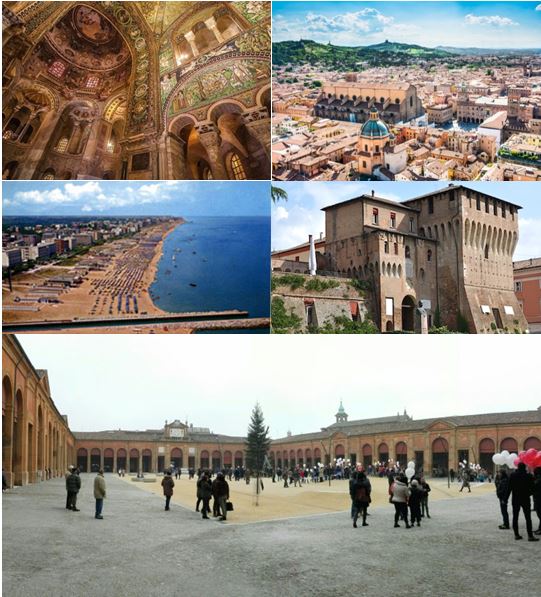 Lugo is a small town in Emilia-Romagna, an enchanting region situated in the north-west of Italy where you can discover suggestive lands, taste traditional food, visit art treasures and important events famous all over Italy. You can see Byzantine mosaics and Christians Basilicas in Ravenna or many museums and historical sites in Bologna which is the chief town. Along the ancient via Emilia it follows one after the other several cities such as Piacenza, Parma, Modena, Forlì and Rimini. There are every year village festivals and you can find sport facilities: golf courses, football pitches, trekking activities on the Apennine and sport competitions along the Riviera, the beach, another thing that makes Emilia-Romagna famous, Cervia, Milano Marittima and Riccione are the main seaside localities.
Lugo is a small town in Emilia-Romagna, an enchanting region situated in the north-west of Italy where you can discover suggestive lands, taste traditional food, visit art treasures and important events famous all over Italy. You can see Byzantine mosaics and Christians Basilicas in Ravenna or many museums and historical sites in Bologna which is the chief town. Along the ancient via Emilia it follows one after the other several cities such as Piacenza, Parma, Modena, Forlì and Rimini. There are every year village festivals and you can find sport facilities: golf courses, football pitches, trekking activities on the Apennine and sport competitions along the Riviera, the beach, another thing that makes Emilia-Romagna famous, Cervia, Milano Marittima and Riccione are the main seaside localities.
Lugo is one of the most important economic and productive centres of Ravenna territory. The heart of the old town, which is composed of the Rocca Estense and the Pavaglione as opposing centres, has a eighteenth-century stamp. It is built on a well-structured system of squares that underlines the evolution and the consolidation in time of the economic and cultural vitality of the city.
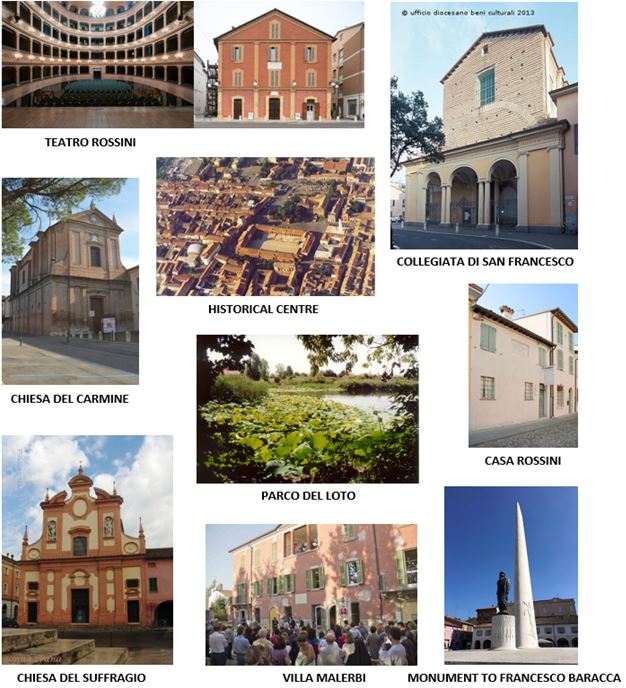
Your path to discover this town must start from the Rocca (the today’s town hall where cultural events take place), an important example of fortified architecture. The complex of medieval origin, as underlined by the battlemented keep of cylindrical shape, shows the renewed features of the second half of the XVI century: the inner courtyard, the hanging garden, the towers and the city walls. Opposite the Rocca the other heart of the city stands: the Pavaglione, the large quadrilateral building. Alfonso II d’Este made it build in 1570 to house the market of silkworms’ cocoons. Designed as closed four-sided portico and brightened up by an infinity of shops, the Pavaglione has been and is still today the heart of economic and cultural exchanges of the town. Today it hosts shows, events, markets and fairs. Between the Rocca and the Pavaglione the monument to Francesco Baracca from Lugo, a hero of the Great War, stands, if anything, dominates the space. On the marble wing there is the major Baracca’s symbol, the rearing horse that was adopted afterwards by Enzo Ferrari as official logo of Maranello car company. The historical market of Lugo, which is held on Wednesday in the picturesque squares and streets of the city centre is one of the most important of its kind in Romagna. On the western side of the Pavaglione the Teatro Rossini stands, where important prose works, concerts and a lyric season of international prestige are staged every year. Lovers of classic music can be very interested in the itinerary to Casa Rossini, Villa Malerbi and the Chiesa del Carmine, where organs played by the young Rossini are still visible. Among artistically important religious buildings there are the Oratorio di Sant’Onofrio, the Chiesa del Suffragio and the Collegiata di San Francesco. Teenagers like hanging out in the city centre because there are many places where to go such as cafes, restaurants, a big shopping centre and a nice city centre where you can have a walk. Lugo is also famous for its charming green area, Parco del Loto, near the Canale dei Mulini along which a nice bycicle lane stretches in a particular itinerary in the nature.
Our School - Liceo Gregorio Ricci Curbastro
Beatrice Cicchetti, Daniel Capannini, Lorenzo Mazza, Pablo Taroni
The school we attend was built after Fabrizio Trisi’s death in 1630 so it was named after him. Originally it was a High School for classical languages (Latin and Greek) and a branch of Ravenna’s High School. Also Ricci Curbastro Scientific High School, born during WW II, was a branch of Ravenna’s. Lugo’s High School finally obtained its autonomy in 1954.
During the 70s there were less enrollments, due to the economic crisis people preferred to attend technical institutes and get a job without going to university.
During the 80s enrollments increased and this afforded both High schools (scientific and classical) to fuse into a single one with a wider range of courses such as linguistic, psychological and technological, now known as "applied sciences".
In 2012 a new wing was added to the building in Orsini street and all the courses of the high school are now in one single building. Also the name changed and was dedicated to Gregorio Ricci Curbastro, a mathematician of Lugo who lived between 1853 and 1925, inventor of the absolute differential calculation.
Today this high school hosts about 1300 students and more than 100 working staff. The present headmaster is Mrs. Giuseppina Di Massa.
Gregorio Ricci Curbastro High School has a variety of programs: classical, scientific, applied sciences, human sciences (social studies) and foreign languages ones. The base subjects are Italian, Math, English, Science and other subjects belonging to the specific courses.
There about 70 classrooms, counting also the different laboratories equipped with materials and devices necessary for the study of subjects like foreign languages, IT, Physics, Science, Chemistry so students can also verify through experiments what they have studied. We also have a laboratory with microscope and one with air sucking for experiments with dangerous gas. Finally we have a library with hundreds of books about different topics, available for students.
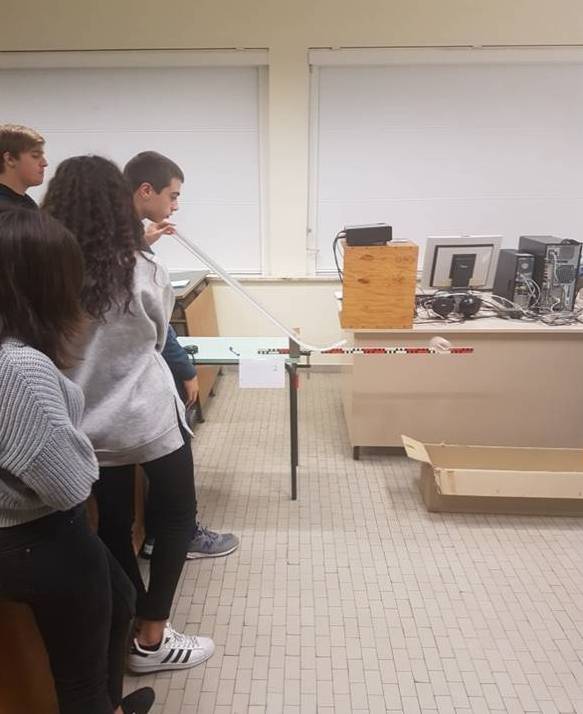 |
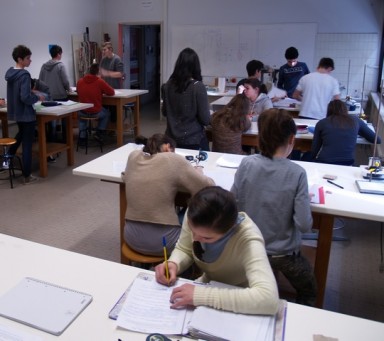 |
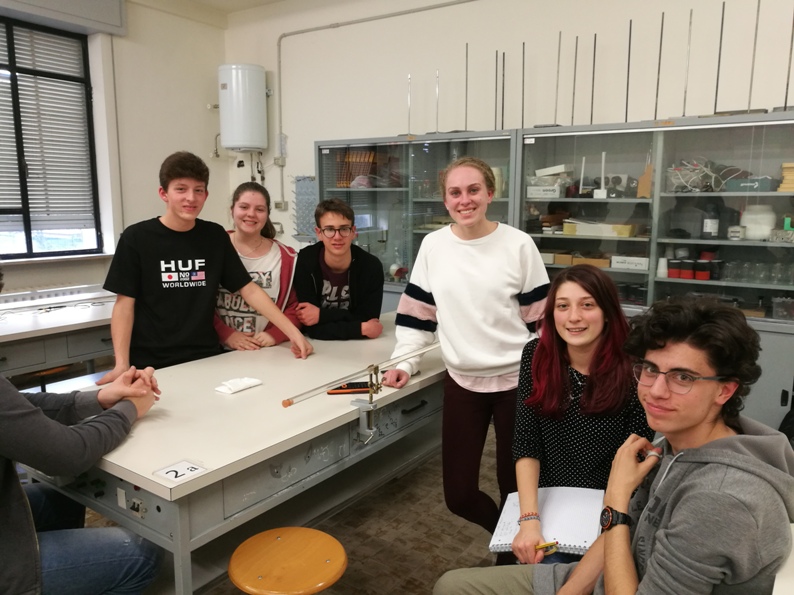 |
| Physics Laboratory |
Physics Laboratory |
Physics Laboratory |
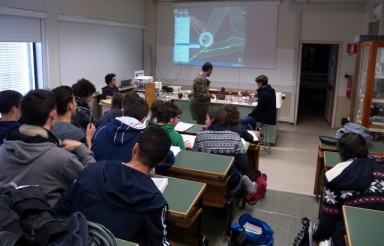 |
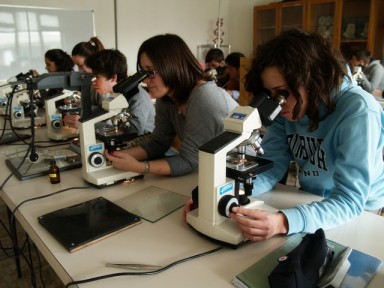 |
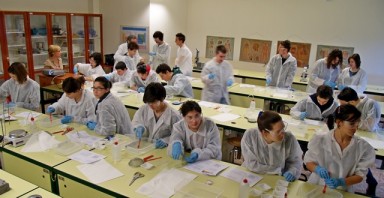 |
| Physics Laboratory |
Biology Laboratory |
Science Laboratory |
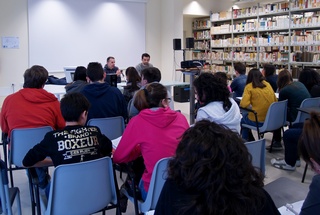 |
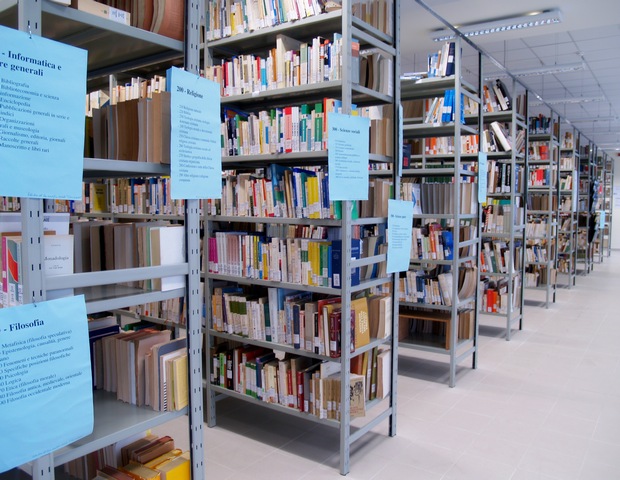 |
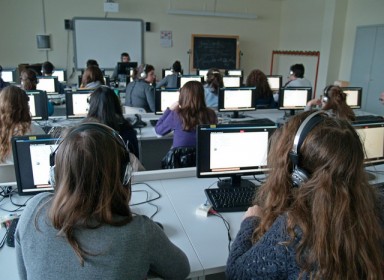 |
| The Library |
The Library |
The Language Laboratory |
-----------------------------------------------------------------------------------------
Presentation of the class 3ASA
Gianmarco Donati, Leonardo Foschi, Beatrice Laureti, Denise Leoni, Federica Montanari
When we started at high school we were 20 pupils in our class, but now we are 18 because two pupils have changed school because they didn’t like the subjects and they thought that they were too difficult.
In the class there are 5 girls and 13 boys: this has never been a problem because we made friends almost immediately even if all of us came from different places and we didn’t know each other at all. Our friendship goes beyond the walls of the school, in fact we also go out in the weekend and we have fun together.
Also the relationship between students and teachers is good. We have nine teachers for different subjects. They are available if we don’t understand or need something but we don’t always agree on the same things, for example homework or texts.
We change class room only to go to the laboratories, so to get to know each other better, from the beginning, we decided to change our places in the class room once a month; in fact the position of desks in our classroom implies that there are three rows and in each one there are six guys, divided in pairs.
We believe we are lucky to have a class like this because we help each other deal with problems that we have every day, like attending our difficult school course.
-----------------------------------------------------------------------------------------
The "Applied Scienze" program in the Italian high school
Giovanni Baioni, Mattia Battaglia, Giuseppe Marzano, Francesco Mirandola, Marco Montanari
Scientific high school in Italy is divided in two programs: traditional and applied science (the program that we are attending). In our course there are al lot of subjects, Information Technology (IT) is one of the main subjects along with Physics, Science and Maths, and our course is different from the traditional one because there is IT instead of Latin. During these years we have to study also humanistic subjects such as Italian, English, Philosophy and History. In our course we have the opportunity to do experiments for Physics and Science in our labs in the school. The purpose of our school is to prepare students to attend in future the different courses of study at university especially in scientific subjects.
----------------------------------------------------------------------------------------------------------
The physics program of 3ASA
Elisabetta Donati, Lorenzo Giardini, Luca Lanconelli e Cesare Morelli
A topic we studied in the last years was dynamics which includes the 3 Newton’s Laws of motion and their applications, the forces in general, inertial and non-inertial reference systems, Galilean transformations and pressure’s laws like Stevin’s one or the Archimedes’ principle.
This year we’re studying rotational dynamics, which include rotational kinematics, rotational kinetic energy and angular momentum. Every topic mentioned before is related with the same in linear and projectile dynamics, not only for the name, even for the way you can calculate them. In rotational dynamics we have everything what we have in linear dynamic but with different physical quantities. Conservation is present in both linear and in rotational dynamics.
This year we've resumed the kinematics, in particular we've studied three new types of movement in the plane: projectile motion and circular motion. About projectile motion we analyzed it in two dimensions with horizontal and oblique initial speed. Then we've studied the circular motion, in particular the angular velocity, the centripetal acceleration, the centripetal force and their applications.
The 1st topic we studied this year was collisions in 1 or 2 dimensions. In order to work with them we introduced the linear momentum (p), the result of the multiplication between the mass and the speed of the body. This might be useful to study in park attractions, where for example, cars collide with each other.
Those topics are not all, we will also study ravitation and its application to satellite motion. Gravitation deals with, more or less, how two masses are attracted to each other. The force of attraction is related with both the masses and their distance. Generally, as their masses increase, the force increases and as distance increase, the force decreases.
Another argument that we studied last year but we are also analyzing this year is energy and work, which consist in the kinds of energy (different types of potential, kinetic, mechanical), conservation of mechanical and total energy, conservative and non conservative forces. About work, we're studying the work of a constant and variable force, the power, the work- energy theorem and their applications.
The last topic we studied in our 1st year of high school was heat, that is about the heat produced, used or moved during phase changes or other processes.
This was also a little introduction to thermodynamics, a topic we will study in the next few months which links heat transformations with energy and work.
------------------------------------------------------------------------------------